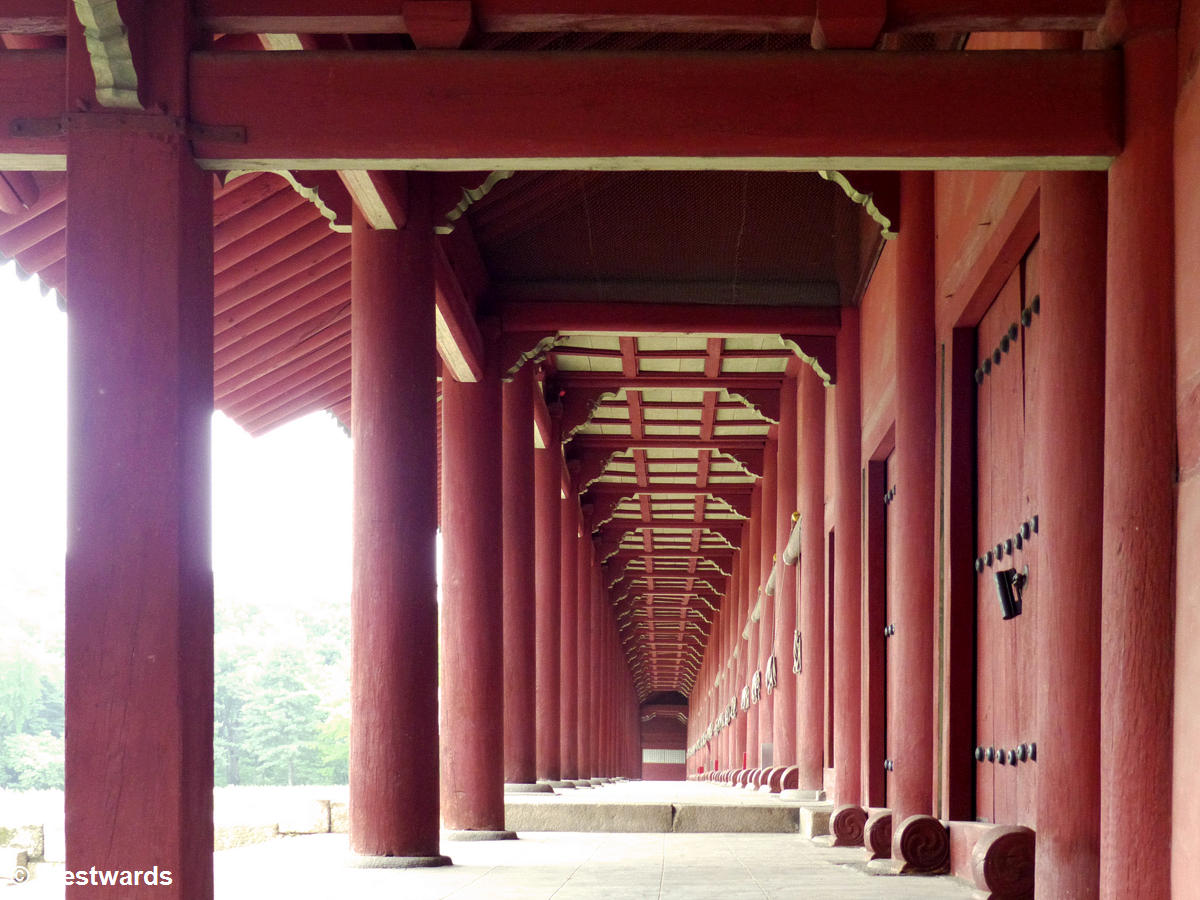
10 am on a blistering hot summer day in Seoul. Our Korean tourist guide arrives with a battery-powered handheld fan tucked into her belt. She is very professional about her sightseeing tour to Jongmyo Shrine in Seoul and admonishes the travellers in her group:
“Jongmyo is the memorial shrine for the Royal Ancestors of the Yi Dynasty of Korea. It is still a place of worship: no loud noise or undue behaviour! Please stay on the marked paths!”
More than 100 years after the fall of the dynasty, the descendants of those Korean kings still regularly hold Confucian memorial services for their ancestors. This longstanding tradition of complicated rites has been named a UNESCO intangible heritage in 2008. Later it also made Jongmyo Shrine a UNESCO world heritage site. It is also the reason why Jongmyo is probably the most solemn and tranquil place in the 20-million megalopolis of Seoul. Visitors can only enter on a guided tour.
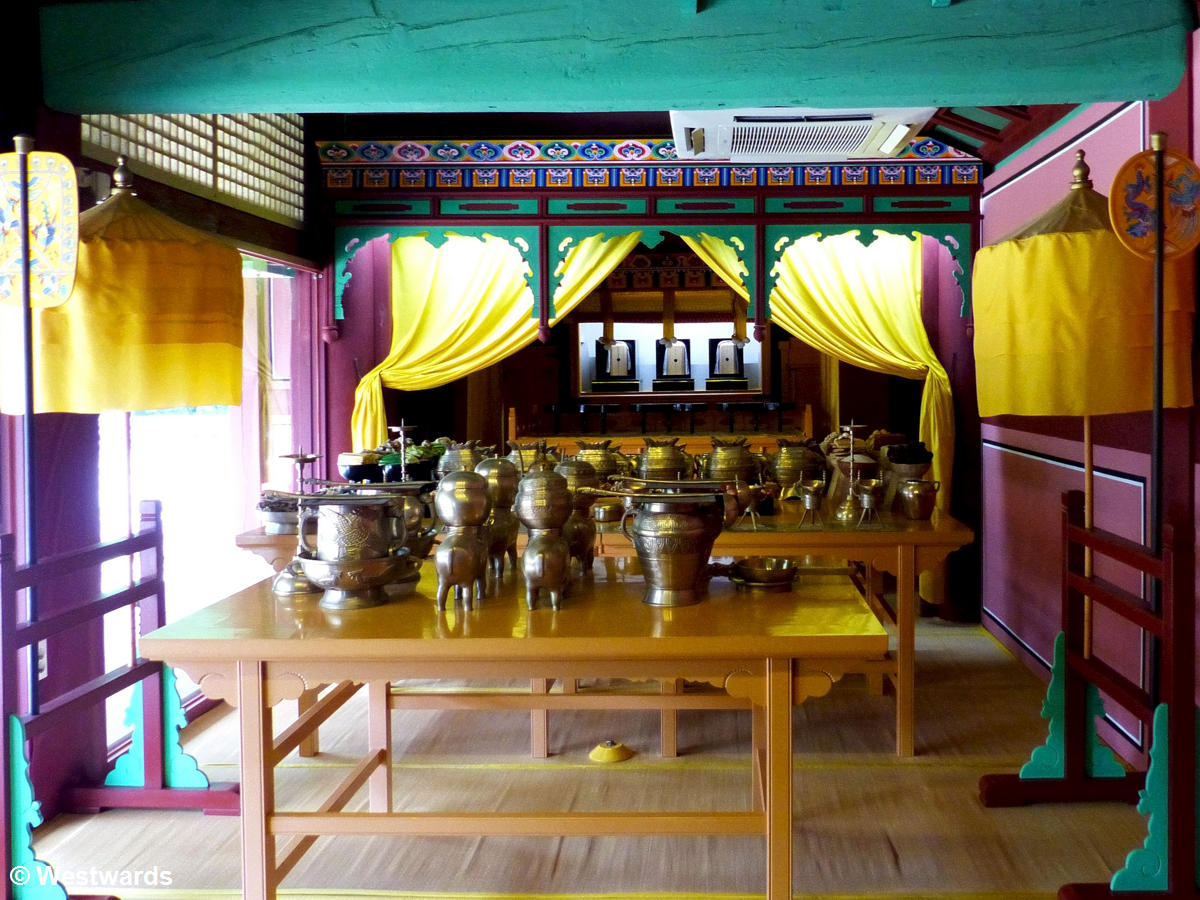
Our sightseeing tour starts at Hyangdaecheong, a small building complex exclusively used for the preparation of the rituals. The ancestors’ souls would get offerings consisting of a whole banquet of dishes. In the kitchen and pantry block curious tourist can marvel at a recreated model of such a memorial buffet.
A changing room for the royals
There was also a separate courtyard called Jaegung. It was exclusively for the king and crown prince to change into special ritual robes for the event. For ritual (and perhaps also literal) cleansing they would also take a bath in this place, only a few steps from the main shrine. Complicated geomantic rules (feng shui) dictated the layout of al these buildings. A building, for instance, had to be “east of the palace”, but “before the mountains,” and so on.
“They even had to add a small man-made hill in the Southern part of the precincts to get it right”
claims our guide
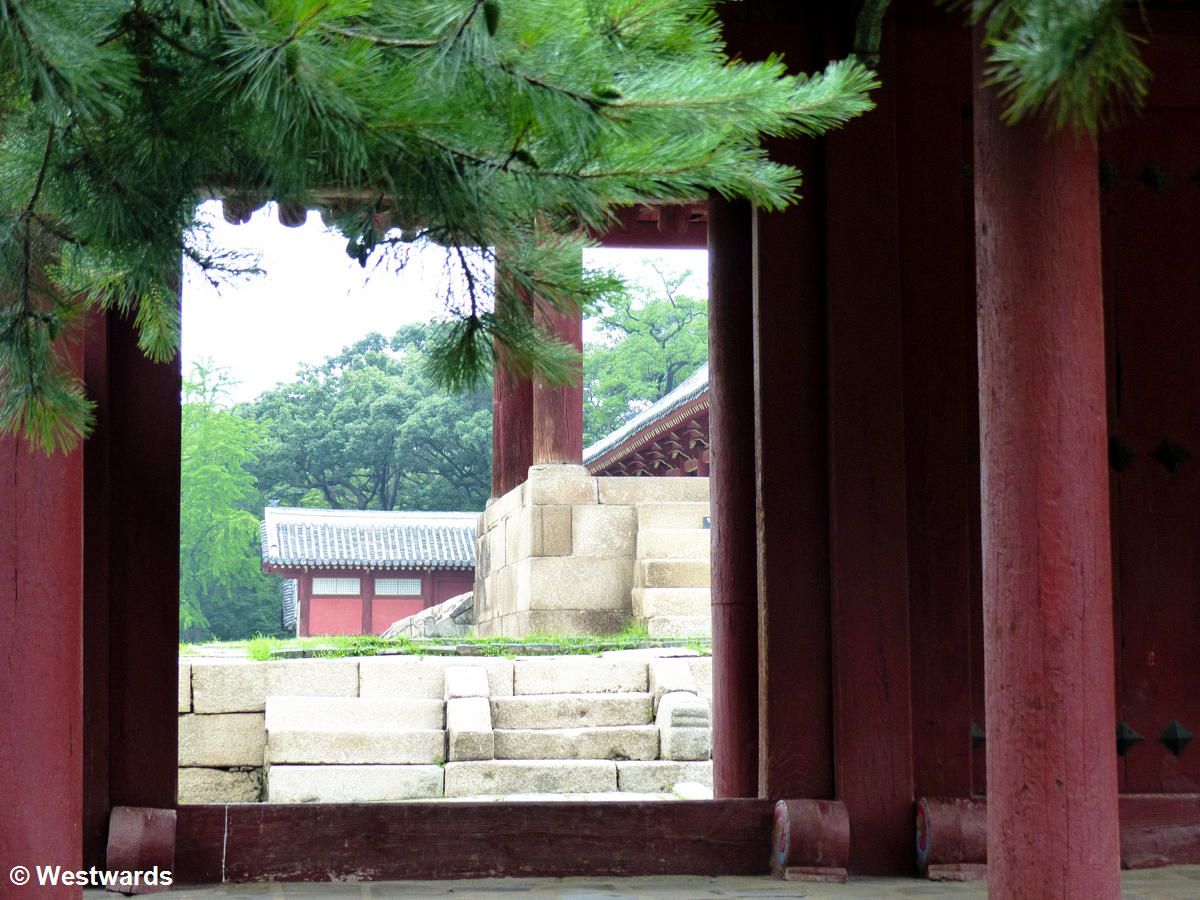
Finally, we reach Jeongjeon itself, the large shrine for the royal ancestors. Only the immortal souls dwell here – the ashes are buried in a different location. The centre of Jongmyo Shrine is a very long building with wings extending to the sides. It consists of 19 chambers all opening to the front yard. Each chamber is for a different royal ancestor. The first shrine, established in 1395 for the first king’s immediate forebears, was later extended to both sides as the dynasty continued. The Yi Dynasty turned out rather long-lived – it ruled Korea until 1910 (then as “emperors”). Eventually, space got scarce at the Jeongjeon main building. It was then that the kings even built a smaller shrine (Yeongnyeongjeon) somewhat to the side.
How to get a first row place at the shrine
Everyone still wanted to be honoured in the main shrine, however. Therefore the new appendix became a kind of second-rate shrine. It housed, for instance, kings who had ruled only briefly. Also, those very first ancestors before the dynasty became kings had to leave the main shrine and move to the less important Yeongnyeongjeon. The last to be enshrined with the second league was Yi Un, Crown Prince without a kingdom. He only died in 1970. Confucianism, we learn, is very competitive even in death. The kings were probably familiar with constant rankings, as our resolute guide explains. Part of their duties was to continue studying the old scriptures for all their life. During their reign as well as posthumously they were awarded scholarly titles for their achievements (complete with certificates and seals).
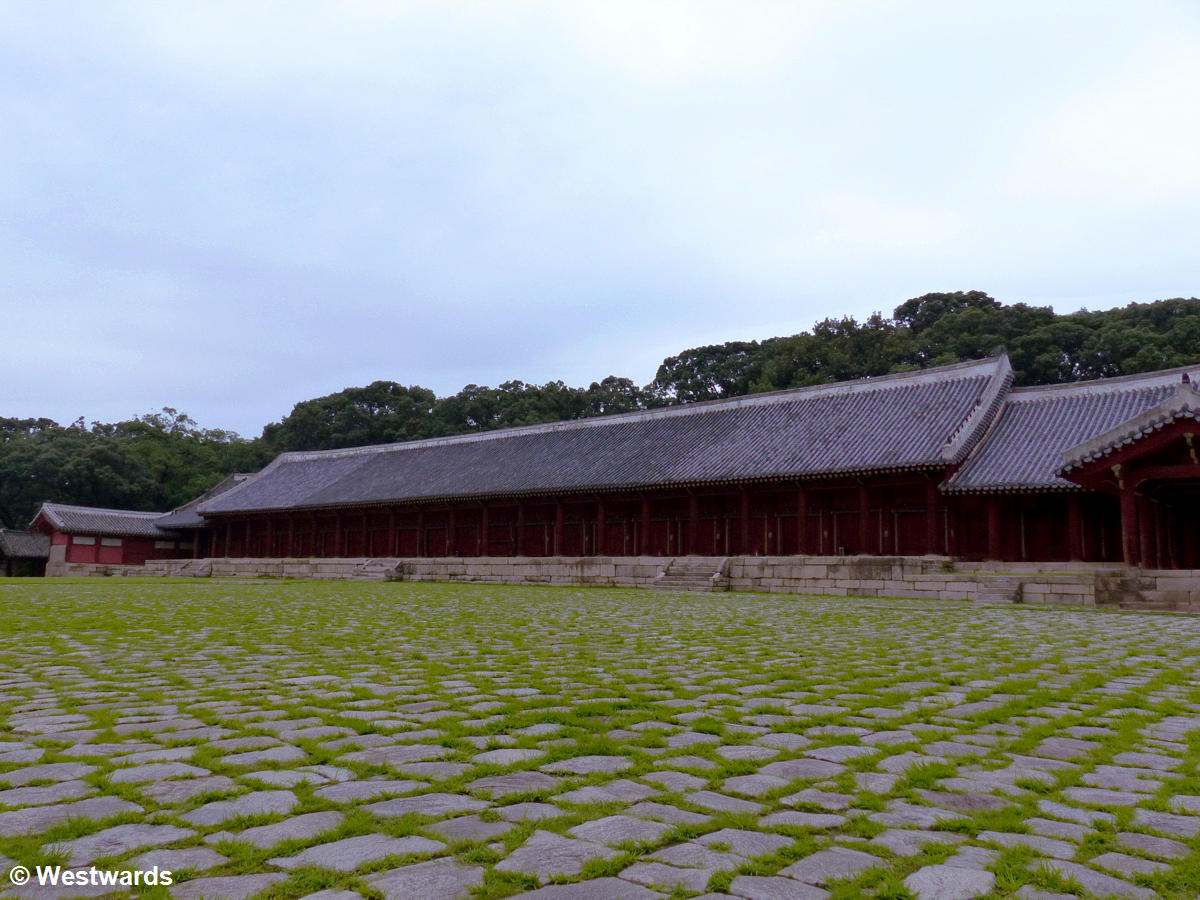
The main shrine’s courtyard is rather similar to other Confucian palaces and buildings we have seen, from the Imperial Palace in Beijing to the restored Shuri-jo Royal Palace in Naha/Okinawa. The stone platform in front of the ancestral chambers used to have fittings to add sun shades. In addition there were markers for the different ranks of officials who had to line up for the rites. Shortly after a king’s death, such rituals had to be conducted quite often. But other ceremonies take place only every few years.
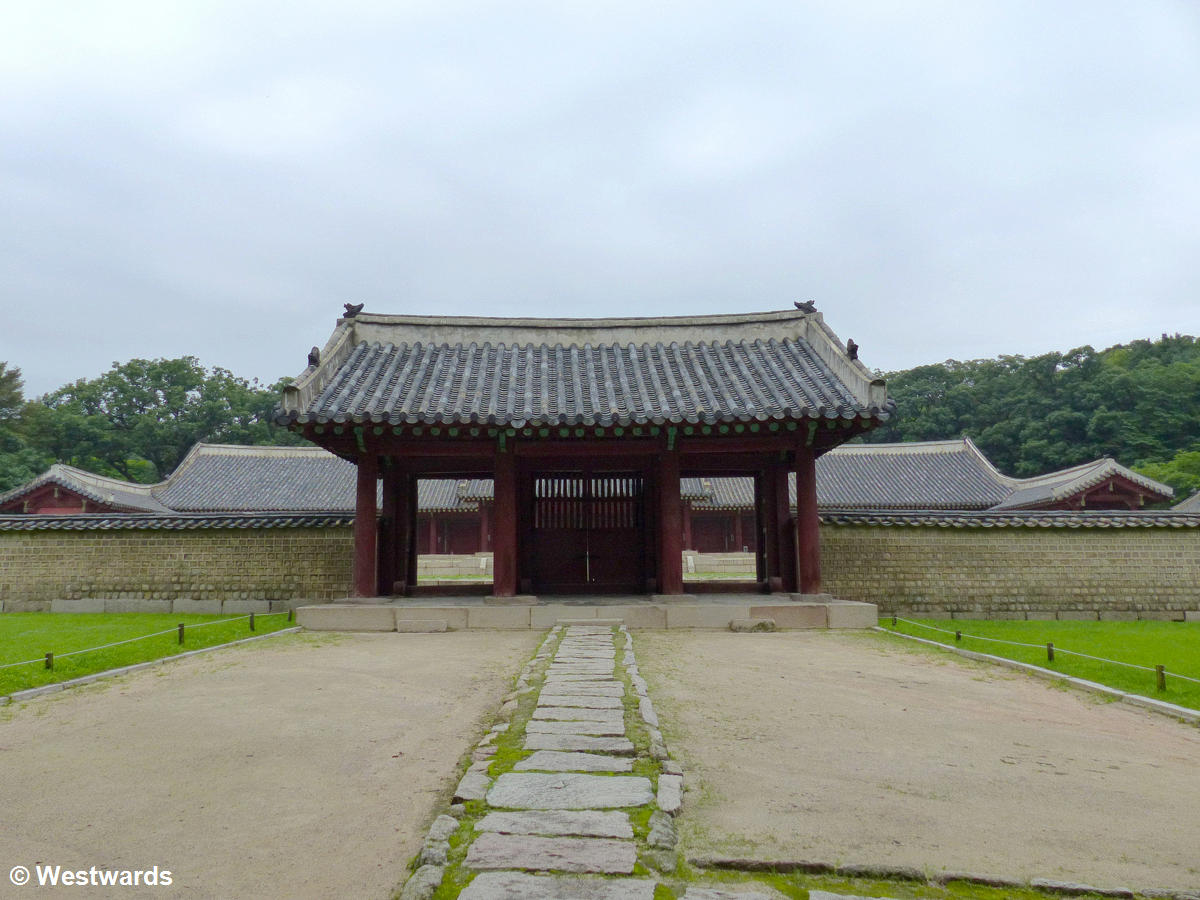
Obviously, guided tours do not take place while rituals are under way. So all the royal cubicles in the ancestral shrine were closed to ensure the royal ancestors’ privacy and solitude.
But as soon as we leave the Jongmyo Shrine compound, we are propelled back into the noise and tourist activity of central Seoul.
How to get to the Jongmyo Shrine in Seoul
Jongmyo Shrine is within walking distance from Seoul tourist attractions such as Insadong pedestrian street and Gyeongbokgung Palace with their international travellers.
***We did not receive any funding for our trip to the Jongmyo Shrine in Seoul. All expenses for our trip to Seoul we paid ourselves and.***
Never miss a new post! Get notifications about new posts straight into your inbox!




Honestly, often the intangible heritages are more fascinating and unique than all those well-kept buildings and complexes. To me, they feel more rooted in the culture and history of a region – I like that a lot.
Since you say it was hot and it looks pretty overcast in the pictures, I imagine this humid heat that really wears you out?! Anyway, in which month have you visited – and was it a good time of the year?
Dear Renata, we visited in July and it was very, very hot and humid. Actually we were drenched as soon as we left the hotel. If you cannot stand such a humid weather I would recommand going before June or after September. We have visited Korea several times when we lived in Japan. So I would say October/ early November and April/ May are the best months.
This is such a fascinating site. I’ve never seen any shrine or temple like this and am in awe of the architecture. It’s also good to know you can walk here from Seoul, it looks like it could be much further out in the countryside.
Dear Lisa, actually it is quite in the center of Seoul, set in a garden.
This tour is fascinating to me, as someone unfamiliar with the ceremonies and traditions in Seoul. I would love the opportunity to visit Jongmyo to better understand these rituals and gain an appreciation for the remembrance of these royal souls who passed so long ago. It’s actually quite heartwarming to think that these 19 rooms are dedicated to each royal member. And, it sounds like a peaceful reprieve from the everyday clamor. Thanks for sharing this meaningful experience that honors the ancestors of the Yi Dynasty – I would like to visit someday.
I loved the cultural insights that you have given through this visit. It is one to know the rituals of Korea in today’s world but another to experience what the high royalty had. Even they had a list that qualified you for the front row here – imagine that! I can’t believe such a tranquil place exists in the mega city of Seoul.
It was fascinating to read that the Confucian memorial services have been named a UNESCO “intangible” heritage. First time I saw something with that designation. Good to know in advance that people can only visit the Jongmyo Shrine with a guided tour. But then, I am sure we would learn far more from a guide. Interesting that there was so much competition for the various shrine areas. Definitely a tranquil spot so close to Seoul city centre.
Dear Linda, the “Intangible Heritage” list of UNESCO is quite long. It comprises festivals around the world, as well as other traditions and also traditional handicrafts.
So interesting that there were specific rules about the layout of the buildings. It’s always interesting to learn about the culture of any place we visit. I can appreciate that this is a sacred place for honoring royal ancestors. The rituals and traditions performed at this and other shrines are so fascinating.
Dear Tami, the Jongmyo Shrine is a very spiritual place and it was fascinating to see how these ritual are performed even today.
I got to say this is an interesting take on learning about the heritage culture of Seoul. No wonder it is designated an intangible heritage site because of its rich history and educational experience that has to offer. Before reading this article would not have thought that there is something called Jaegung for the king and crown prince to shower and rest before going to the festival. Keep up
It’s incredible that they’re still holding memorial services for ancestors who’ve passed so long ago. You can learn so much about a culture based on how they view death and the life after. The fact that they awarded titles to these ancestors posthumously demonstrates an impressive reverence for the lives that were led.
Dear Kate, the practice of giving special titles to the ancestors after death is common in many Asian cultures. But visiting the Jongmyo Shrine in Seoul and experiencing the atmosphere there is very special indeed.
I’m totally drawn to UNESCO intangible heritage sites and love the living history of this shrine. We’ve traveled all over Asia and other Confucian palaces and can’t believe we haven’t been to the dynamic Korea yet. Your post on Jongmyo makes we want to go to Seoul so much more!
What a fascinating site to visit. I love exploring cultural sites and learning about the unique rituals and practices of different civilizations. I have not yet been to Korea but will add this to my list of places as this has certainly piqued my interest.